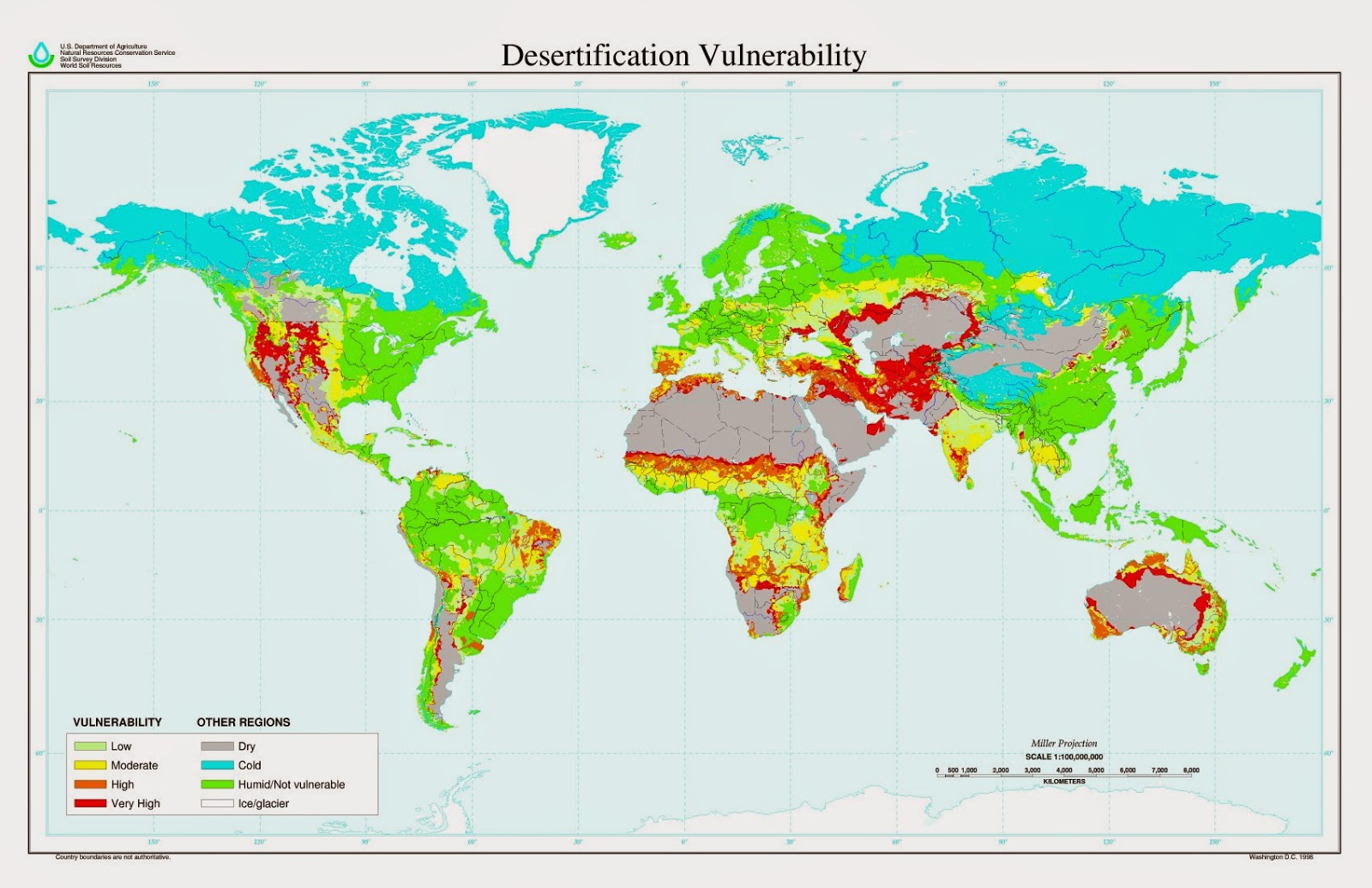A recent report
entitled ‘UN report: one-third of world’s
food wasted annually, at great economic, environmental cost’ sparked in me
a concern over land usage and destruction caused by our very own food wastage.
Our wasted food accounts for a staggering 28% of the world’s agricultural area or 1.4billion hectares. All of which ends up in our bin. The article
discusses a recent report published by the FAO on our Food
Wastage Footprint. With the drastic spreading of desertification, we
simply cannot afford to allow 28% of our fertile land produce to be thrown in
the garbage. As the diagram below
indicates, areas surrounding now desert land (marked in red) are at high risk
of desertification, these areas often belong to small countries who are highly
dependent on their agricultural use and whose desertification will only cause a
ripple effect of increased dependence and indebtedness on agricultural land
belonging to more economically wealthy countries.
 |
| Copyright: http://upload.wikimedia.org/wikipedia/commons/6/68/Desertification_map.png |
The results of a study
undertaken by A. Challinor in 2010 suggests that for China, “climate change will result in increasing spring wheat crop failure in
northeast China due to increasing extremes of both heat and water stress.”
Now according to this
quotation, that study correlates with the image above, where North-east China
is at high risk of desertification. There has also been a lot of coverage on
rice crop failures in China and the millions of tonnes of GHG’s released as a result of this. Although there are ideas being developed
to create heat-resistant and drought-resistant crops, the real answer is right
in front of us and within reach. Following the FAO report cited earlier, the
FAO provided a free toolkit on reducing our food wastage footprint.
 |
| Copyright: http://www.rmaf.org.ph/userfiles/ images/profile_pictures/F/fukuoka.jpeg |
Another view of
desertification which I would like to touch on is that of Masanobu Fukuoka. I
recently read a book of his, One Straw Revolution which spoke of his
system of natural farming where crops could be grown without plowing his
fields, using no prepared fertilisers or agricultural chemicals and did not
flood his rice fields as farmers in Asia continue to do. A method which he
himself developed and lived by for over 65years and in fact yielded greater
quantities of crops than the most productive farms in Japan. This book is
highly relevant to the individual and although delves into some technicality,
Fukuoka’s book serves a far greater purpose than farming
methods. However it is his second and last book which I find so relevant to
this topic of desertification, called Sowing Seeds in the Desert. Although Fukuoka’s influence has been only marginal so far, the increased rate of
desertification begs us to look at alternative possibilities, which include a
return to simple but effective methods of farming. Fukuoka reminds us that the
present state of our land is not natural but rather a result of our own
destructive actions, his silver-longing however, is it can be remedied and
perhaps eventually reversed. HIs aspiration was to achieve “global food security” by natural farming which he practiced and preached in Africa, India,
Southeast Asia, Europe and the United States.
Fukuoka offers us an opportunity to put aside our guilt as we face this
earth’s degradation and take a step forward in the right
direction.
Una Quinn